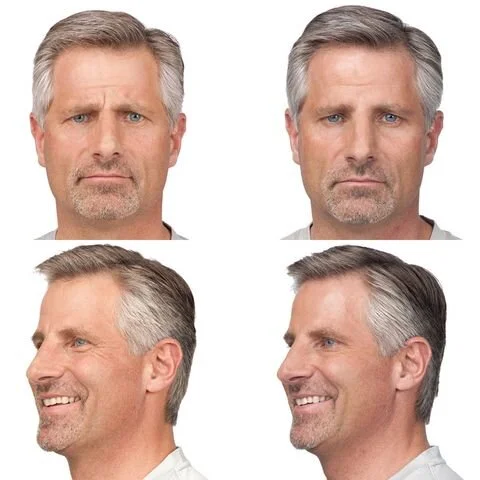ALL ABOUT: NEUROMODULATORS
(Botox, Xeomin, Dysport, Nuceiva)
What is a neuromodulator?
A neuromodulator for aesthetic purposes, also known as a wrinkle relaxer (such as Botox, Xeomin, Dysport, Nuceiva), which is derived from type A botulinum toxin. It works by blocking nerve activity in the muscles, causing a temporary reduction in muscle activity that cause dynamic lines which eventually lead to static lines if left untreated. Neuromodulators are injected with a fine needle directly into the muscles. The most common treatment areas include forehead, frown (lines between the eyebrows), and crow’s feet (lines around the eyes).
How does a neuromodulator work?
The repeated muscle contractions result in dynamic lines. Static lines are evident when the face is at rest. Neuromodulators can be used to relax these muscles and create a smoother appearance on the overlying skin. Even if you don’t have static lines yet, it is a great preventative treatment to stop those lines and wrinkles from forming.
Will neuromodulators make me look like I’ve had work done?
A neuromodulator is a technique-sensitive treatment. You should not lose the ability to show expression when you are treated by someone who is licensed, trained, and a medical expert in facial anatomy. It is important to talk to your specialist about the results you want from treatment.
Does a neuromodulator treatment hurt?
Some patients report that being injected with a neuromodulator feels like a pinch or plucking a hair. Your injector may use ice to numb the treatment area. If you are concerned about discomfort, your injector may apply a topical numbing cream before administering your treatment.
What were common side effects seen in clinical studies?
Possible side effects include: dry mouth; discomfort or pain at the injection site; tiredness; headache; neck pain; eye problems: double vision, blurred vision, decreased eyesight and dry eyes; and allergic reactions. These are not all of the possible side effects of neuromodulators for aesthetic purposes.
How long does the treatment take?
Your injector will discuss your treatment goals and perform a facial analysis to determine the appropriate treatments for you. Appointment time is 30 minutes and the actual injection process takes about 10 minutes.
What is the average treatment cost?
Your cost not only includes the price of the product, but more importantly, the skill and expertise of the specialist who is administering your treatment. Be wary of discount products or “cheap” wrinkle relaxers — if it sounds too good to be true, it probably is. A wrinkle relaxer is a technique-sensitive treatment — it is more important to find an experienced specialist who will take the time to understand your treatment goals and develop a treatment plan that is right for you.
When will I see the results?
You may begin to notice results as early as 24 to 48 hours, full effect can take up to fourteen days, and a post-injection follow-up is scheduled in two weeks post-treatment. Results may last up to 4 months.
How many injections will I receive?
When treating with a neuromodulator, care must be taken with the dosage and position of injections. This is not a one-size-fits-all treatment. Every face is different and your injector should always be mindful of treating your individual anatomy to achieve the most natural and flattering result. A two-week follow-up is recommended as you may need a top-up.
How long is the recovery time after treatment?
After your treatment, you can resume your day. There is minimal downtime and your injector will give you specific aftercare instructions.
How long does a neuromodulator for aesthetic purposes last?
A neuromodulator can last up to 4 months. How long a neuromodulator lasts will be different for everyone. It also depends on the areas treated, and how many units were injected.
Do men receive wrinkle relaxing treatment?
Yes. Neuromodulators for aesthetic purposes have also been clinically evaluated in male patients. The three most common treatment areas for men are forehead lines, frown lines, and crow’s feet.
